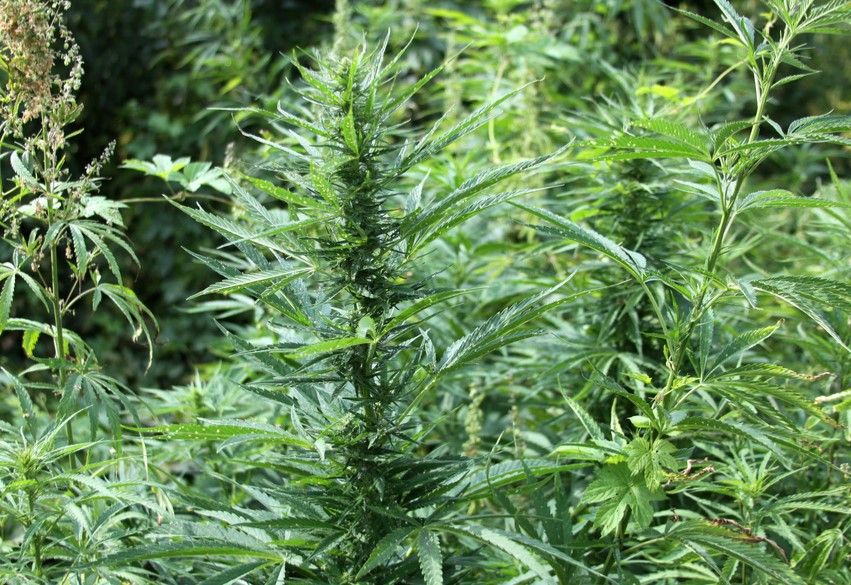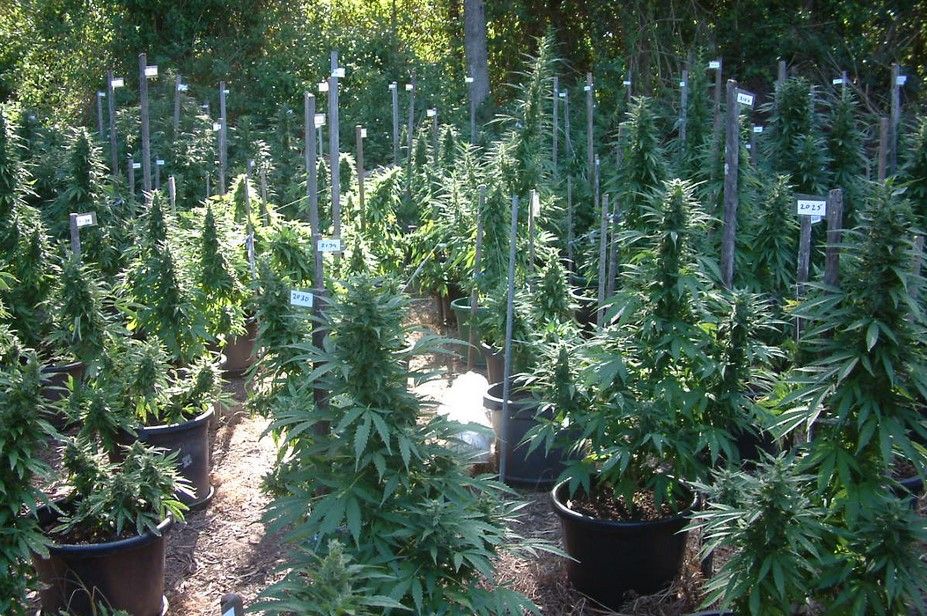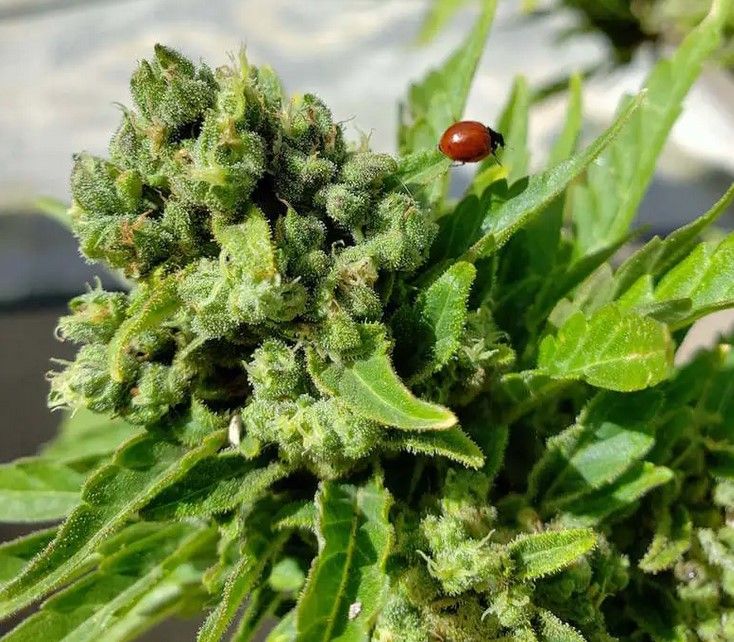Most cannabis cultivators are always trying to find new ways to better the quality of their flowers. While some people may argue that there is no difference in marijuana grown with chemicals and organic weed, those who know best can tell the preference for naturally produced pot. Here is a easy guide on how you can grow organic weed yourself.
What Does “Organic” Mean?
Any product that is produced from a recently living thing can be described as organic. Growing organic marijuana necessitates the use of natural resources for your growing medium and plant foods. It’s not derived from manufactured salt compounds created in a lab. Organic particles are more likely to decay or be generated as a consequence of decay, unlike synthetic chemical recipes intended to produce commercial crops quickly at low cost.
Plants, animals, and human waste accumulate on the forest floor in a natural environment over time. They break down with the aid of insects, germs, maggots, and fungus to nourish the topsoil layer that is essential for plant growth. This process, known as the “soil food web,” is how recently living organisms sustain themselves and complete the life-death cycle by feeding their future selves and completing the cycle of life and death. To encourage roots to grow, we need mycorrhizal fungi that can break down nutrients so they are accessible and easy for plants to uptake. The top layer of soil is full of helpful microbes and bacteria, which is what we aim to replicate when growing organic weed.
Some examples of chemical-based non-organic nutrients are Miracle-Gro, Peter’s, and General Hydroponics Flora Series three-part formula. While using these methods will create bigger plants with nice looking flowers, unless you flush for a long time the buds will burn up quickly and ash continuously. I’ve smoked decent pot grown with chemicals before (and have done it in the past), but organic strains always come out on top in the end.

Step 1: Why Grow Organic?
Pouring poisons and other pollutants into a lifeless medium, such as the ground or a body of water, not only pollutes rivers, lakes, and seas but also causes needless damage to your neighborhood environment.
The Salton Sea is one result of chemical agribusiness runoff, and it’s a perfect example of why we should avoid nonorganic nutrients. The sea is salty and filled with rotting fish carcasses, emitting a foul smell that can only be attributed to humans. This isn’t the pleasant smell of decay you might find in nature; it’s the harsh odor of death caused by toxic chemicals.
Cannabis growers who want to produce connoisseur-quality and truly medicinal pot should feel an obligation to use healthy, living soil. Nowadays, most nutrient companies provide organic alternatives that won’t clog drippers or stink up reservoirs, so even hydro growers can take advantage of more natural plant foods. Therefore, those grower users who wish their plants were organic should pay extra close attention to organic methods–there’s no reason not too! Chemical formulas are now a thing of the past.
Step 2: How To Grow Organic Weed Indoors
The easiest approach to develop organically indoors is in 5-gallon buckets with holes cut into the bottom. You can produce large plants that might provide up to a quarter-pound-per-plant. Nothing could be simpler.
In states where medical marijuana is legal, limits on plant amounts encourage farmers to grow fewer, larger plants. For massive plants, bigger containers will work. However, the 5-gallon size has been demonstrated to be simplest to manage and transport and can be found at any paint store or hardware shop.
Fill the buckets with your chosen prepared mix and place seedlings or female clones into the top of said mixture. According to lighting size for plants, 400-watt HIDs should be sufficient (High Intensity Discharge) – this can be either MH (Metal Halide) or HPS (High-Pressure Sodium), whereas 600-watt or 1000-watt lighting is ideal bigger colas.
At least one month of growth in the vegetative state is necessary for these plants to reach an adequate size to begin flowering and initiate the plant’s budding stage. It’s essential that lighting penetrates deeply to plump out the buds on a bush that can grow up to 3 feet tall.
Danny Danko’s Magic Organic Mix for 5-gallon Buckets
- 3 parts Canadian sphagnum peat mix, coco coir or Pro-Mix
- 1 part large chunky perlite
- 1 part worm castings
- 1/2 cup greensand
- 1/2 cup of dolomite lime
- 1/3 cup of Peruvian seabird guano
- 1/4 cup Epsom salts
To test your soil, fill a bowl halfway with water and add one to five drops of liquid soap. Stir it all up and swish it around to make sure everything is well-blended. Allow it to soak for at least a day or two before using it. This is to ensure that the materials are properly combined and oxygenated. It should be moist throughout but not overly saturated (nutrient-rich).
Allow water to sit for at least 24 hours to allow chlorine in the water to evaporate, killing off your helpful germs. Airstones placed at the bottom of the bucket with an air pump will also help speed up this process.
Use compost teas and diluted liquid seaweed throughout development, as well as high-phosphorus bat guano tea during flowering. Flush at the end is not necessary, simply use milder tea for the final two weeks of blooming. On fan leaves, some natural yellowing will take place, which is a positive thing since nitrogen is being drawn out of the plant’s cells.

Step 3: Making Organic Teas
Use 5-gallon buckets to brew custom teas for each stage of plant growth. Early on, a compost tea is perfect for both watering and foliar spraying. Fill a nylon stocking with your chosen ingredients, which can include compost, guanos from both seabirds and bats, and molasses to feed the microorganisms.
Fill the bucket with water and use an air pump and bubbling stone to oxygenate it for a few hours, which also gets rid of chlorine as well as other potential pollutants. Then, steep the nylon sock in water for two days while stirring every now and then–but keeping the airstone going to keep everything aerobic (oxygenated).
After the tea has steeped for around thirty minutes, strain it into another container. Then, you can either pour it directly over the plant roots or spray it on the leaves; both methods will help to prevent foliar diseases. The sooner you use the tea, the better; its effects only last for an hour approximately.
Step 4: Use Organic Pest Control
There are several good bugs for each pest and a variety of natural treatments that are both safe and effective in getting rid of the pests that harm plants. Chemical explosives and hazardous synthetic pesticides have no place in any cannabis garden.
Ladybugs and predator mites may be purchased online. It’s actually kind of entertaining to watch them consume their meal—the malevolent vegetarian insects that have been feeding on your plants. Smoke a big spliff, grab a big magnifying glass, and enjoy the show. It’s like Discovery Channel but with marijuana!
Step 5: Organics Outdoors
It’s simpler to let your plants grow organically outside. If you have the room, make a compost pile with leaves and kitchen waste in addition to lawn clippings. You can even use spent rootballs and used bubblebag scraps. stir up the pile once each week with a shovel or compost fork and you’ll quickly have an abundance of free compost (also known as “black gold”) to blend into your outdoor soil forplanting new crops or use as mulch for your potted plants.
If you’re gardening outdoors, the bigger your container or grow hole, the better. Loose organic mixes and plenty of sunshine encourage roots to grow rapidly, resulting in large bushes that yield a pound or more per plant! Even better: dig your own hole deep and fill it with a variety of organic materials for a custom “seasoned” spot. You can re-use it year after year by simply replenishing the mix.
Keeping plants healthy in the sun is easy with liquid seaweed and fish. You can also use compost and guano teas with a healthy regimen of organic additives. Soon, you’ll be growing trees that are so big, you’ll need a hacksaw to take them down!

Reliable Companies Selling Organic Products
The following brands are some of the leading hydroponic nutrient manufacturers: Foxfarm, Advanced Nutrients, Suite Leaf Nutrients, General Hydroponics, Canna, Age Old, Earth Juice, Biobizz, Botanicare
Final Hit: How To Grow Organic Weed: A Step-by-Step Guide
In conclusion, you should grow organic weed for the following reasons… With the right tools and know-how, success is practically guaranteed. So what are you waiting for? Get out there and start growing your own organic weed today!

